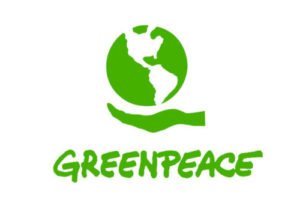

Environment
Arctic Saved From Possible Fishing Destruction
A region in the Arctic will be protected from industrial fishing thanks to an investigation by Greenpeace. Research showed that previously untouched areas of the Arctic were being destroyed by trawling boats fishing for cod. A number of high profile businesses backing the investigation have agreed to reign in their fishing boats.
In a joint statement, companies including McDonald’s, Tesco, Birds Eye, Young’s Seafood and Europe’s largest frozen fish processor, Espersen, have said their suppliers will refrain from expanding their cod fisheries further into pristine Arctic waters whilst scientific research into this largely unexplored marine environment takes place. From the catching sector, Fiskebåt -representing the entire Norwegian oceangoing fishing fleet- and Russian Karat Group, have also signed onto this historical agreement.
The agreement, which spans the whole supply chain from sea to shelf and covers an area twice the size of France, was brokered by Greenpeace following a campaign launched in February. It marks the first time the seafood sector has voluntarily imposed limitations to industrial fishing in the Arctic. This means that any fishing companies operating in these pristine Arctic waters will not be able to sell their cod to the brands supporting this agreement.
The deal follows a Greenpeace investigation showing that fishing fleets using bottom trawling gear are advancing into pristine areas previously covered by ice. The report exposed how well-known food brands and retailers around the world were at risk of sourcing products tainted with Arctic destruction.
Daniela Montalto, Greenpeace UK campaigner, said: “This is a major step in the right direction. This unprecedented alliance have today taken a stand for the fragile Arctic environment, and set an important precedent for other industries eyeing up this region. The challenge for these companies is now to deliver on their commitment to Arctic protection and show real results out on the water. The melting ice should be a stark warning of the dangers of climate change, not an opportunity to plunder this fragile ecosystem.”
This statement comes as the latest satellite observations indicate that Arctic sea ice loss could be more dramatic this year than ever before. With sea ice levels at record low, large areas of water are left open for longer periods making the need for legal protection to replace the protective ice-shield even more urgent.
The region, which includes the Svalbard archipelago, also known as the ‘Arctic Galapagos’, is home to vulnerable species including polar bears, bowhead whales and Greenland sharks. The swathe of Barents Sea covered by the agreement is adjacent to major fishing grounds where at least 70% of all the Atlantic cod that ends up on dinner plates around the world comes from.
Currently, there is no law in place to protect Arctic areas previously covered by sea ice. In the absence of political action by the Norwegian Government, Greenpeace welcomes the temporary stop-gap this agreement brings. But the environmental group is also calling on the Norwegian government to wake up to the urgent need of bringing legally binding protection to these areas.
Montalto continues: “The Norwegian government must now acknowledge the growing resistance to reckless exploitation of the fragile Arctic environment, not only from the millions of people around the world who want the Arctic protected but also from the corporate world. Now is the time to take concrete steps towards legal protection of Svalbard and the northern Barents Sea so that Norway can meet its international obligation for marine protection.”
This summer, the Greenpeace ship Arctic Sunrise will go to the Arctic to ensure that the entire fishing industry meets these commitments and that cod ending up on UK dinner plates does not come from Arctic destruction.


 Features10 months ago
Features10 months agoWhat is the Eco-Friendliest Option to Wash Your Dishes?

 News11 months ago
News11 months ago5 Ways Fleet Maintenance Software Can Help Businesses Be More Eco-Friendly

 Features11 months ago
Features11 months agoAddressing Pressing Ethical Concerns with Crypto Exchanges

 Environment12 months ago
Environment12 months ago10 Tax Incentives for Businesses That are Lowering their Carbon Footprint





























